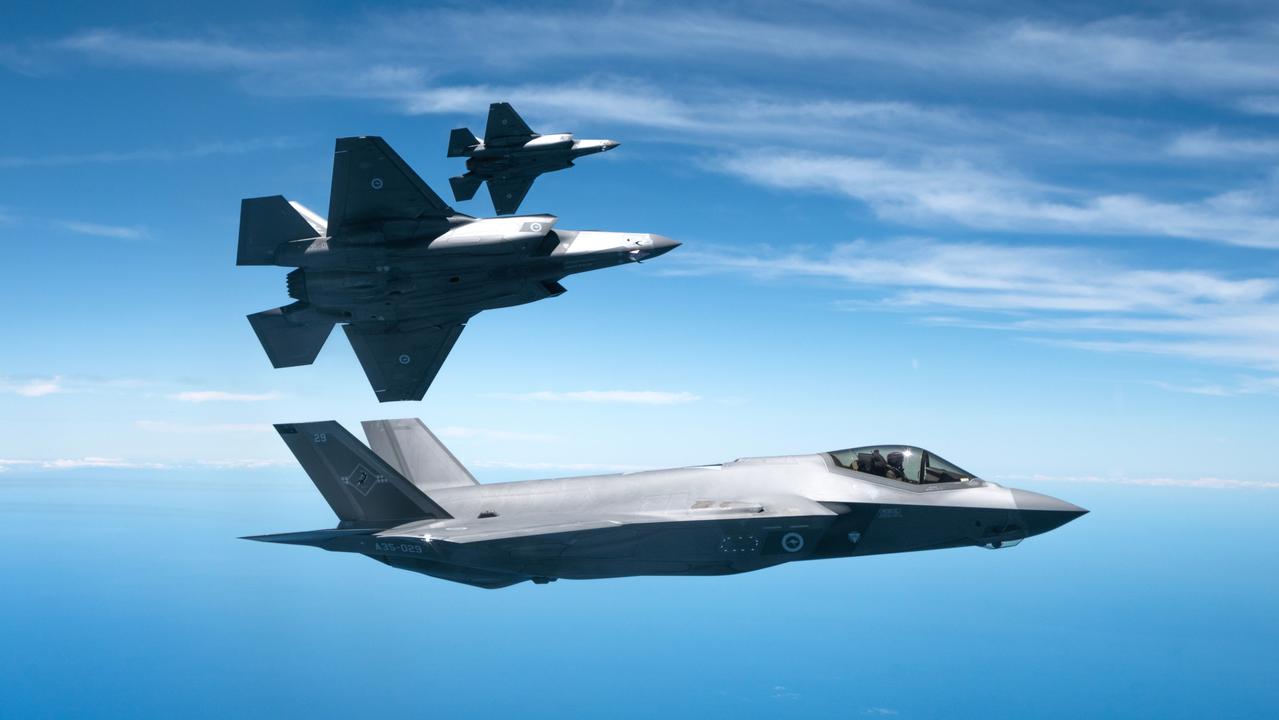Future-proofing Australia’s air combat fleet
The Royal Australian Air Force is embarking on a series of wide-ranging programs to upgrade its air combat fleet to meet the rapidly growing capabilities of other players in our region.

The Royal Australian Air Force is embarking on a series of wide-ranging programs to upgrade its air combat fleet to meet the rapidly growing capabilities of other players in our region.
Key to this goal are the technical and capability upgrades being applied to its current air combat fleet of F-35A Lightning II, F/A-18F Super Hornet and EA-18G Growler combat jets.
In addition, the commonwealth is partnered with Boeing Defence Australia to develop the homegrown MQ-28A Ghost Bat, an autonomous platform that acts as a “loyal wingman”, providing force-multiplication at a relatively modest cost.
However, the Ghost Bat was not selected as one of the two platforms the US Air Force wants to move forward with under its similar collaborative combat aircraft program and this may force Australia to fall in line to reduce development costs.
The RAAF has received 63 of the 72 F-35A aircraft on order, but deliveries have been frozen since late 2023 due to certification delays in the US, with the latest configuration, known as Tech Refresh 3 (TR-3), and (software) Block 4.
“Block 4 upgrades provide the most significant evolution in capabilities to date for the F-35. TR-3 is the mission systems avionics upgrade that is part of Block 4,” a representative of the manufacturer, Lockheed Martin, said.
The upgrades will enhance the situational awareness and data-sharing capabilities of the aircraft.
“Block 4 aircraft will be able to carry more missiles, have more advanced non-kinetic electronic warfare capabilities and deliver increased lethality by improving target recognition,” the representative said.
“All Block 4 capabilities are about ensuring that F-35 transformational capabilities remain decades more advanced than rapidly evolving adversary systems.”
Final operational capability for Australia’s F-35s has been delayed by at least a year due to the logjam in the US, but aircraft are expected to begin arriving again in 2025.
The 63 aircraft already delivered will be brought up to the latest standard from next year.
The RAAF’s Super Hornet fleet is set to remain in service until 2040 and, together with the EA-18G electronic attack aircraft, they will receive capability enhancements in line with the US Navy’s spiral development program. The US upgrade program is known as Block III and BDA director of sustainment operations, Naomi Smith, said the aircraft being delivered to the US Navy were the most advanced F/A-18s ever built.
“They complement existing and future air wing capabilities, offering the USN and international partners advanced capabilities and additional options for increasing combat effectiveness,” she said.
Block III includes enhanced network capability and processor, reduced radar signature, advanced cockpit and communications systems and an airframe life extension from 6000 to 10,000 flying hours.
“Super Hornet upgrades will include Block III infra-red search and track pods, advanced data links and additional weapons, including the long-range anti-ship missile and joint air to surface stand-off missile – extended range,” said a Defence representative said.
“Growler will integrate next- generation jammer pods and advanced active anti-radiation Missile – extended range.
“These upgrades will ensure the lethality and survivability of the Super Hornet and Growler capabilities through the 2030s.”
Defence said it was continuing to develop and assess the autonomous MQ-28A Ghost Bat to understand its potential as a platform, as well the role a collaborative combat aircraft could play in the future force. The project will demonstrate CCA operation and integrated force capabilities throughout 2025.
“Autonomous collaborative platforms enhance the integrated force’s ability to deliver a ‘strategy of denial’ by increasing the lethality and survivability of existing platforms and providing additional combat mass,” a Defence representative said.
“As a subset of autonomous collaborative platforms, CCA like the MQ-28A Ghost Bat are designed to operate as part of an integrated system of crewed and uncrewed platforms.”
To date, BDA has completed eight MQ-28A prototypes and three upgraded Block II aircraft are currently in production.
If further funding isn’t forthcoming, production is due to be completed by the end of 2025.
“We have worked closely with the RAAF to mature the concept of operations for MQ-28,” said BDA’s director of the MQ-28 global program, Glen Furguson.
“We have made significant progress in the last two years to mature the Ghost Bat’s capabilities and we are working towards being able to deliver an operational capability to the RAAF in the next few years.”
In April 2024, the US Air Force selected rivals Anduril and General Atomics for the detailed design, production and testing of test aircraft under Increment 1 of its CCA program. This which would appear to cast a shadow over Australia’s ability to continue with Ghost Bat without access to the huge US market.
Sources close to the program, however, said the US had indicated that companies that had not been selected would still be able to compete in the program, and perhaps Ghost Bat will be offerred a lifeline.


